The wonder of the Solar System cannot be overstated. Its creation and its continued existence are truly mysterious and indeed miraculous. The more we learn about our Solar System the more questions manifest and the less we seem to know. Nevertheless we are as much a part of the Solar System as the planets, moons and asteroids and so the more we learn of this wonderful place the more we learn of ourselves.

The wonders of our Solar System
by zteve
A brief introduction to the planets and regions of our Solar System.
The creation of the Solar System
The Solar System consists of planets, moons, asteroids, minor planets, comets, meteorites, gas, dust but mostly empty space. The Sun is in the centre of this space and the planets, moons, asteroids, minor planets, comets and everything else orbits the Sun.
The Sun is the largest object in the Solar System over containing 99% of the mass in the System. Large objects have stronger gravity than smaller objects and the Sun being the largest object has powerful gravitational forces which pulls all the other objects in the system towards it.
At the same time because these objects are trying to fly away from the Sun into deep space. These two forces balance each other out creating equilibrium. The objects such as planets become trapped between the Sun and deep space causing them to continuously revolve around the Sun in an elliptical orbit.
Most of the rest of the mass is contained in the planets within that orbit and the rest in the minor planets, moons, asteroid and comets also orbiting the Sun.
How did the Solar System form?
Scientists believe that the Solar System was created billions of years ago forming from a giant cloud of gas and dust. This cloud of gas and dust collapsed under the weight of its own gravity and began moving in a great circle much like the way water spirals around a drain when the plug is removed.
The gravitational forces of the cloud caused a small star to form in the centre which grew and grew as more and more gas and dust continued to collapse into it causing the centre to eventually causing atomic reactions to form the Sun.
Further away from the centre a similar process of gas and dust collapsing to form smaller masses which became the planets, moons, comets, asteroids and minor planets
The centre of the Solar System - The Sun
A giant nuclear furnace
The Sun does not burn like a fire but instead acts like a giant nuclear furnace where atomic reactions take place on a massive scale. From this furnace atomic particles are blown outwards away from the Sun. This is known as the solar wind and it gradually forced the remnants of the gas and dust cloud out of the Solar System. Because there was no more gas and dust the planets, minor planets, asteroids, moons and comets could not grow any bigger.
Planets and moons
There are eight planets in all orbiting the Sun with many of these having moons orbiting them. There are also minor planets some of which are smaller than moons. Some of the moons and minor planets are greater than Mercury, the planet nearest the Sun
There are some very interesting features on some of the moons. Io, one of Jupiter’s moons is known to be volcanically active. The surface of Europa, another of Jupiter’s moons is made of ice and it is thought that there is a possibility that there may be water underneath. On of Saturn’s moons, Titan is believed to have lakes and seas of liquid hydrocarbon such as ethane and methane
The inner Solar System and the inner planets
The inner Solar System
The first four planets and asteroids nearest the Sun are traditionally referred to as the inner Solar System. These four inner planets are much nearer to the Sun and because of this the Solar winds are stronger and faster giving them less time to accumulate material. This is why they are smaller than the outer planets and made from rock, metals and dust. The outer planets were subject to less powerful solar winds they had time to grow larger by attracting more gas and dust. To give an idea of scale, the distance between Jupiter and Saturn is greater the radius of the inner planets section of the Solar System.
The inner planets
The nearest planet to the Sun is Mercury, followed by Venus, Earth and then Mars. These four planets are known as the inner or terrestrial planets and are mostly composed of rocks and minerals that form a solid surface. Venus, Earth and Mars are known to have atmospheres which can produce weather conditions and land masses that have impact craters and features such as rift valleys and volcanoes.
DVDs featuring the Solar System
 | PlutoOnly $0.99 |
 | Evolution of the Solar System |
The planets of the inner Solar System
Mercury
The smallest of all the planets in the Solar system is Mercury which is also the closest to the Sun. It is know to have a few geological features on its surface such as impact craters and ridges which may have been formed early in its history when it contracted. The atmosphere is believed to consist of atoms that the solar wind has blown from its surface though it is very thin and barely discernable. There are no moons in its orbit.
Venus
The second planet from the Sun is Venus which is of a similar size to Earth. Like the Earth, Venus is comprised of an iron core with a silicate covering. Evidence of past inner geological action can be seen though no sign of current activity has yet been found, but it is thought that the atmosphere is renewed by volcanic activity.
From a human point of view Venus is a very inhospitable place being the hottest planet in the Solar System with surface temperatures in excess of 400 Centigrade. These high temperatures are thought to be caused by the atmosphere consisting of a high density of greenhouse gases. Venus has a magnetic field which stops the atmosphere floating off into space.
Earth
Larger and denser than the other inner planets, Earth is the third planet from the Sun. Unlike the other inner planets it has huge areas of liquid with lakes and seas and of water. It is known that the Earth has undergone geological and volcanic activity in the past and that it still regularly takes place in the present.
The atmosphere has been modified by the existence of life on the planet and is the only planet known to host life forms. The Earth is orbited by one natural satellite we call the Moon.
Mars
The fourth planet from the Sun is Mars. There is plenty of evidence of past volcanic activity on Mars with huge volcanoes and rift valleys all over the surface of the planet. This volcanic activity may only have stopped around two million years ago which is a short span of time in geological and astronomical terms.
Mars is often called the ‘Red planet’ because it has a high amount of iron oxide in the soil. There are two small satellites orbiting Mars, Phobos and Deimos, which are believed to be asteroids that became trapped in orbit by the gravity of Mars.
Explore the Solar System with Kindle
 | Astronaut Gabriella Explores the Solar System (Gabriella Books) Gabriella is an astronaut who travels to outer space and tells us about all the planets in our solar system. Only $0.99 |
 | The Third Side (Battle for the Solar System, #2) Simon Dodds has had his wings clipped. Shot down over the luxurious holiday planet Mythos and separated from his wingmates, he is quick to discover that the once-popular sun ... Only $2.99 |
 | Our Solar System (revised edition) Double Tap to Zoom. Born almost 5 billion years ago at the edge of the Milky Way galaxy, our Solar System is a place filled with mystery and wonder. In the last fifty years, ... Only $2.99 |
 | 14 Fun Facts About the Solar System: A 15-Minute Book (15-Minute Books) You may think the Solar System consists of the sun and the eight planets that orbit around it. However, there are other things out there. There are comets, moons, asteroids, ... Only $0.99 |
The Outer Solar System
The outer Solar System is where the other planets, Jupiter, Saturn, Uranus and Neptune are situated. These four planets are gas giants and have large moons orbiting them
Also found in the outer Solar System are short-period comets and the centaurs. The centaurs are minor planets that also have characteristics of comets as well as asteroids. Because this region is so far from the Sun the colder temperatures give the solid objects a greater ratio of water, methane, ammonia and other volatiles than is found in the rocky planets and objects of the inner Solar System. The cold keeps these compounds in a frozen, solid state.
The Outer Planets
The Outer planets
These four planets are also sometimes known as Jovian planets, together account for 99% of the known mass orbiting the Sun. These are huge objects and Jupiter and Saturn are both many times bigger than Earth consisting mostly of helium and hydrogen Both Uranus and Neptune are smaller than Jupiter and Saturn but have a greater consistency of ice. Some astronomers think they should have their own category and be known as ‘ice giants’ though they are still classed as gas giants at the moment. All four of these planets have rings.
Jupiter
The planet Jupiter has 66 known satellites in its orbit. The largest moon of Jupiter is Ganymede which is also the biggest in the Solar System while also being greater than the first planet from the Sun, Mercury. This moon, as well as Io, Callisto, and Europa share similar features with terrestrial planets such as a hot internal centre and volcanic activity.
Jupiter is massive, being 2.5 times the size of all the other planets combined. It is constituted mostly of helium and hydrogen and it most famous feature is the Great Red Spot and bands of clouds in the atmosphere.
Saturn
One of the most beautiful sights of the Solar System Saturn is instantly recognisable for its ring system formed from tiny particles of ice and rock. Saturn’s atmosphere has similarities to that of Jupiter in its make up. Saturn has less density than any other planet in the Solar System even though it has 60% of the volume of Jupiter, it has less than a third its mass.
Saturn is known to have 62 satellites in its orbit. One of these, Titan, is the second largest moon in the Solar System and also bigger than the planet Mercury. It is the only moon known to posses a significant atmosphere. Titan along with Enceladus, another of Saturn’s moons is mostly made of ice and show evidence of geological action.
Uranus
Of all the outer planets of the Solar System Uranus is the lightest. Unlike the other planets Uranus revolves on its side around the Sun with an axial tilt of over 90 degrees. The core of Uranus is considerably colder than that of the other gas giants and gives off less heat. Uranus is known to have 27 moons in its orbit the largest being Titania, Oberon, Ariel, Miranda and Umbriel.
Neptune
Neptune has greater mass and density than Uranus and radiates more heat, while being cooler than Saturn and Jupiter. There are known to be 13 moons orbiting Neptune, with Triton being the largest which is the only large satellite known to have a retrograde orbit. Triton has geological activity with geysers of liquid nitrogen. In its orbit of the Sun, Neptune has a collection of minor planets that co-exist with it called Neptune Trojans.
eBay - The Solar System
Other Regions of the Solar System
Pluto
Pluto used to be classified as planet but was reclassified as a dwarf planet and plutoid in 2006. It is known to have four moons, the largest being Charon and the others are known as Nix and Hydra and a satellite provisionally termed S/2011 P 1.
The Asteroid Belt
Orbiting the Sun between Mars and Jupiter is a band of objects of various sizes ranging from small grains of dust to objects like Eros that are 100 miles in diameter. There are even a few such as Ida that are orbited by moons. This band is known as the Asteroid Belt.
The Kuiper Belt
Another band of objects orbiting the Sun can be found beyond Pluto, which is now classed as a minor planet. Here there are many thousands of objects that are not big enough to be classed as planets yet are big enough to have their own gravitational force which forms them into a sphere. Many of these are comets which are sometimes called ’dirty snowballs’ because they are made from dust and gas that has frozen.
The Oort Cloud
Past the Kuiper Belt lies an immense chaotic region containing millions of comets which are not orbiting the Sun but move around in a random directions at great speeds.
The heliosphere
Although the Solar System consists of far more space than matter, the space contains different types of energy and also and at least two types of matter in dust and gas. The dust is actually microscopic particles of solid matter. As well as light the Sun is also the source of the solar wind. This is is a constant flow of charged particle that radiates from the Sun creating a thin atmosphere called the heliosphere that bathes the Solar System and is called the interplanetary medium. This medium has its own kind of weather which is influenced by activity on the Sun such as sunspots or solar flares which can cause geomagnetic storms in the heliosphere.
The wonder of the Solar System
Without doubt the Solar System is a wonder, full of mystery and the product of powers that we do not really even begin to understand and although humanity has a very small place in it, nevertheless, it is a rightful place.
References
NASA http://solarsystem.nasa.gov/index.cfm
Wikipedia http://en.wikipedia.org/wiki/Solar_System
Wikipedia Io (moon) http://en.wikipedia.org/wiki/Io_(moon)
Wikipedia Europa (moon) http://en.wikipedia.org/wiki/Europa_(moon)
Wikipedia Titan (moon) http://en.wikipedia.org/wiki/Titan_(moon)
Pluto http://en.wikipedia.org/wiki/Pluto
BBC http://www.bbc.co.uk/science/space/solarsystem/
National Geographic http://science.nationalgeographic.com/science/space/solar-system/
Other articles by this author
You might also like
Lazarus Syndrome-- When the Dead Come Back to LifeAn unresponsive patient's heart begins to beat several hours after failed CPR...
Book Review: Hubble's Universe: Greatest Discoveries and Lates...Hubble's Universe by Terence Dickinson gives readers the most photogenic of 1...
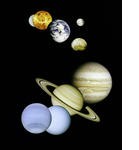

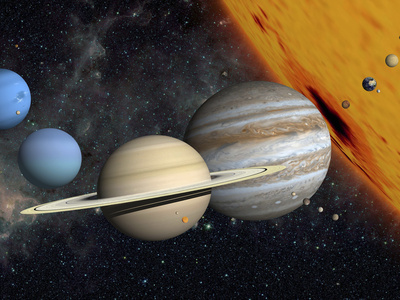
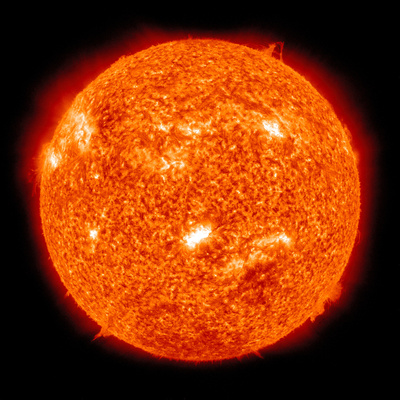
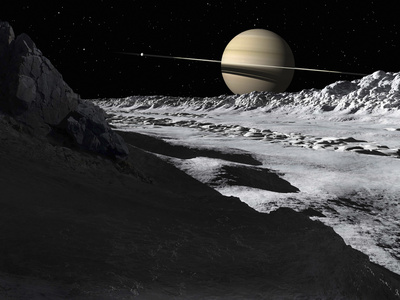
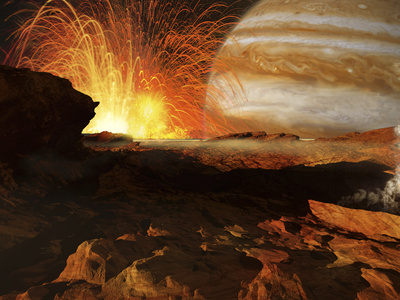





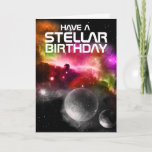
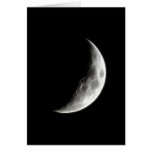
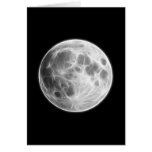
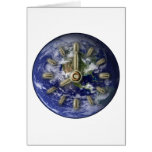
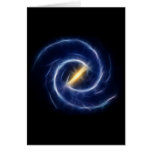

 The Moai of Rapa Nui - the spirit of the peopleon 06/06/2012
The Moai of Rapa Nui - the spirit of the peopleon 06/06/2012
 Celebrating the life and music of Sandy Dennyon 05/03/2012
Celebrating the life and music of Sandy Dennyon 05/03/2012
 Orca Whales - Wolves of the Seaon 01/18/2012
Orca Whales - Wolves of the Seaon 01/18/2012
 Bob Marley - Reggae Legend, Rasta Prophet.on 10/03/2011
Bob Marley - Reggae Legend, Rasta Prophet.on 10/03/2011


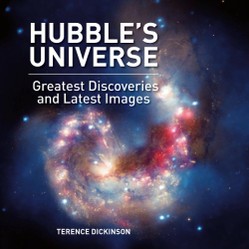
Comments
Tolovaj, Yes I agree, we don't appreciate how lucky we are on Earth! Thanks for commenting.
Astonishing presentation of our solar system. Reading again about the conditions I must admit I am glad I was born on this planet:)
Thanks Mladen, greatly appreciated!
I just love astronomy, and love to read about Space. Great article, with lots of useful basic information we all should know about the part of the Universe we live in.
I am looking forward to read more similar articles...
Thanks Ethel, and thanks for commenting!
Fascinating. A favourite subject of mine that all too often drives me to distraction. Thanks for the info Zteve
I guess girls love anything to with space and science as much as boys do today and I hope she enjoys the page. Thank you for your kind comments which are very much appreciated!
What a great resource, my daughter loves all things solar system, she's gonna love this as do I, what a great page. So glad you've created this awesome solar systems wonder :)
Yes most boys have fascination for space and it can be difficult to keep up with the latest news. Thanks for commenting!
Very handy! My boys are interested in space and I seem to have forgotten a lot of what I once knew. Then of course there's the stuff that has changed like Pluto.